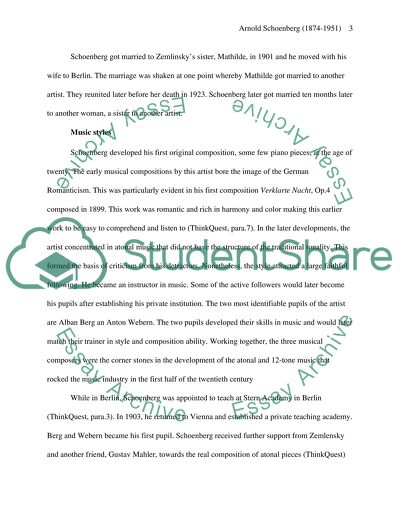Cite this document
(“A Biographical Sketch of Arnold Schoenberg Research Paper”, n.d.)
Retrieved from https://studentshare.org/music/1443086-a-biographical-sketch-of-arnold-schoenberg
Retrieved from https://studentshare.org/music/1443086-a-biographical-sketch-of-arnold-schoenberg
(A Biographical Sketch of Arnold Schoenberg Research Paper)
https://studentshare.org/music/1443086-a-biographical-sketch-of-arnold-schoenberg.
https://studentshare.org/music/1443086-a-biographical-sketch-of-arnold-schoenberg.
“A Biographical Sketch of Arnold Schoenberg Research Paper”, n.d. https://studentshare.org/music/1443086-a-biographical-sketch-of-arnold-schoenberg.


